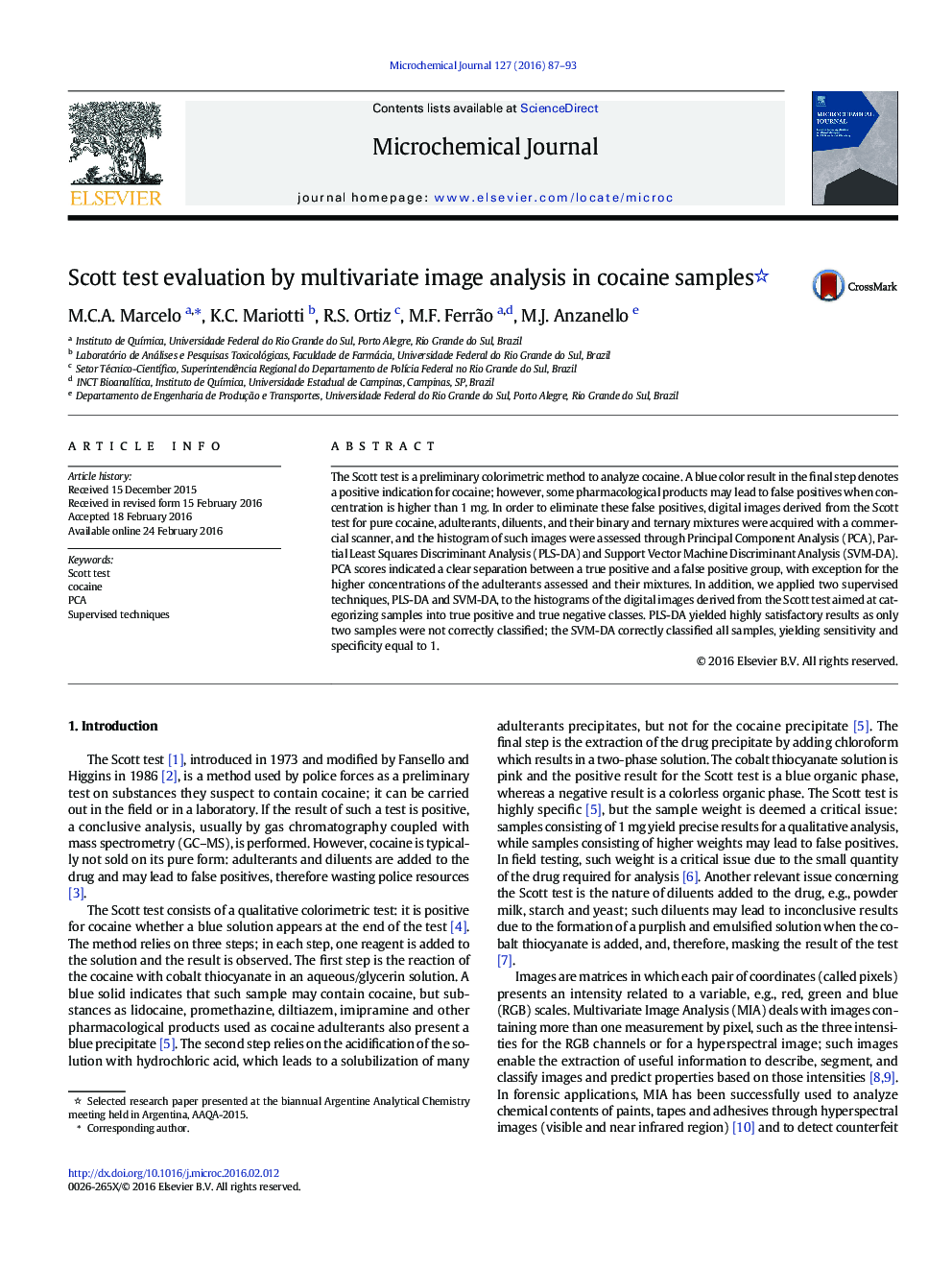| Article ID | Journal | Published Year | Pages | File Type |
|---|---|---|---|---|
| 1227504 | Microchemical Journal | 2016 | 7 Pages |
•Scott test was evaluated for cocaine, adulterants, diluents and mixtures of them.•Scott test digital image was acquired by a commercial scanner and evaluated.•Multivariate analysis on the histogram achieves a perfect classification rate.
The Scott test is a preliminary colorimetric method to analyze cocaine. A blue color result in the final step denotes a positive indication for cocaine; however, some pharmacological products may lead to false positives when concentration is higher than 1 mg. In order to eliminate these false positives, digital images derived from the Scott test for pure cocaine, adulterants, diluents, and their binary and ternary mixtures were acquired with a commercial scanner, and the histogram of such images were assessed through Principal Component Analysis (PCA), Partial Least Squares Discriminant Analysis (PLS-DA) and Support Vector Machine Discriminant Analysis (SVM-DA). PCA scores indicated a clear separation between a true positive and a false positive group, with exception for the higher concentrations of the adulterants assessed and their mixtures. In addition, we applied two supervised techniques, PLS-DA and SVM-DA, to the histograms of the digital images derived from the Scott test aimed at categorizing samples into true positive and true negative classes. PLS-DA yielded highly satisfactory results as only two samples were not correctly classified; the SVM-DA correctly classified all samples, yielding sensitivity and specificity equal to 1.
